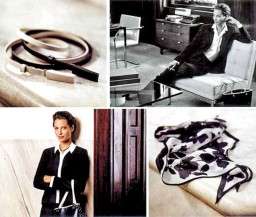Opened in 1954 as a wardrobe source for busy socially upscale women, Ann Taylor today is amongst one of the few specialty retailers from the US targeting women’s wear to survive the recession with a strong position, that includes no debt and US $ 150 million of cash and equivalents. With positive projections for 2013, the company has taken some very upfront decisions to stay healthy…

When the US recession set in with the summer of 2008, the National Retail Federation (NRF) suggested the retailers to move on to growth potential areas, rather than spending time on the underperforming ones. An advice well adapted by Ann Taylor, a legacy in women’s specialty clothing. As more of the mature female shoppers that the brand serviced became careful with their spending, opening up their pocketbooks only when the merchandise and price were right, Ann faced the challenge, which is increasingly common for retailers, on how to revive a faded original brand without slowing the growth of an upstart division. Ann Taylor revived itself in 2010 focussing on a wider target group, bringing in fresh colours and fatter margins.
After shedding off its old reputation of inconsistent performance, the brand managed to form a new fan base and posted better than expected results, registering growth for 11 consecutive quarters, which is a remarkable achievement according to analysts, considering the current retail climate. With the competition being tougher for the brand in the past few years, where apart from its traditional competitors J. Crew, Polo Ralph Lauren, GAP and Talbot, foreign firms such as H&M and Zara started focussing aggressively on the consumer base in US, Ann made a lot of changes in both its merchandise and price points to get their market share back. Ann started looking at and promoting trendier collections, shrinking its store sizes for a more intimate feel, and offering a wide assortment at lower prices to attract budget sensitive consumers without entering the discount territory, in order to maintain its brand identity. As part of its image change, Ann also started rotating a string of actresses through its ad campaigns, including Katie Holmes, Demi Moore and this spring it’s Kate Hudson.
The company’s strategy included opening of fewer stores and a shift of investment in the factory channel expansion for both the existing Ann Taylor Factory Stores and a new Ann Taylor Loft factory outlet concept. These stores offered merchandise 25 to 30% less than at the regular stores and helped the company by delivering a strong gross margin, as it laid certain impact on the price-sensitive consumer. Ann closed 83 Ann Taylor stores during the recession, and has been constantly reformatting the others. The company has even shrunk its square footage at 44 stores, yet sales haven’t fallen, demonstrating that edifice isn’t the only way of growth and expansion.
A huge share of the brand’s success also goes to its successful multi-channel approach. The brand has managed to sell the right styles at the right time and at the right price, all the while competing against a battalion of other businesses across a mix of sales platforms, not only at the traditional mall based or stand alone stores, but outlet stores and online stores as well. Ann is expanding its highly profitable internet and outlet operations, which together contribute 34% of the revenue of the brand. Loft, the lower-priced, more casual Ann Taylor spin-off, is a success in retail and has also been driving the business, doing relatively well than its sister concern Ann Taylor. While competitors like Talbots and Gap are struggling, Loft has hit its stride and has been recently named the fastest growing brand in America by RetailSails, with a 161% year over year growth.

Post a Comment